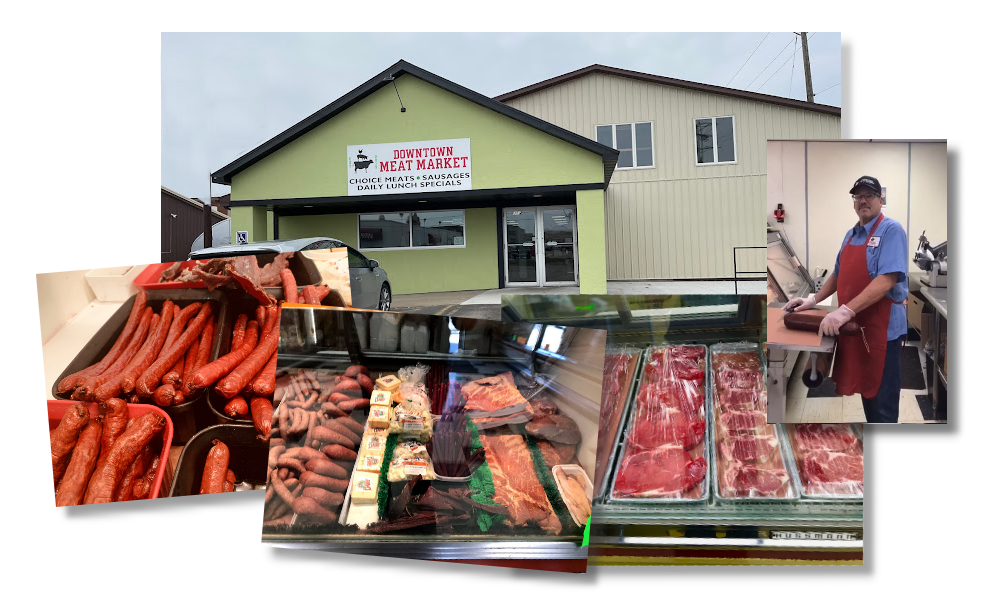Bagley Farms Meat Market Edwardsville IL: Your Relied On Source for High-Quality Meats
Bagley Farms Meat Market Edwardsville IL: Your Relied On Source for High-Quality Meats
Blog Article
Discover the Art of the Butcher's Cut in a Modern Meat Market
In the ever-evolving landscape of modern-day meat markets, the butcher's cut has actually transcended its conventional roots, combining old-time workmanship with modern techniques. What really establishes the modern butcher apart is their ability to build a much deeper connection in between consumers and the origins of their meat.
Advancement of Butchery Techniques
The development of butchery techniques reflects an abundant tapestry of innovation and adaptation driven by innovations in modern technology, adjustments in consumer need, and a deeper understanding of meat scientific research. Historically, butchery was a craft gave via generations, with approaches developed over centuries to make best use of yield and flavor. The commercial revolution ushered in mechanization, changing standard practices and enabling large processing.
The mid-20th century saw butchery methods additionally improved by clinical understandings into muscle biology and meat aging, boosting both tenderness and preference. Developments like vacuum cleaner product packaging and refrigeration extended product shelf-life, allowing butchers to expand offerings and improve quality control. This duration additionally noted the rise of specialized tools, such as band saws and meat slicers, which enhanced accuracy and efficiency in meat handling.

The 21st century has presented digital technology into the butchery realm. Computerized systems now aid in tracking pet provenance and maximizing cuts to satisfy particular consumer preferences. Additionally, a renewal in artisanal butchery has arised, mixing standard skills with modern understanding to accommodate customers looking for ethical and lasting meat options. This development highlights a dynamic interplay in between tradition and technology, meeting contemporary needs while maintaining the craft's heritage.
Understanding Meat Cuts
Comprehending the complexities of meat cuts is important for both butchers and customers seeking quality and worth. For butchers, precise cuts mirror skill and respect for the craft, guaranteeing minimal waste and ideal yield.

Recognizing muscle mass composition is critical; muscular tissues utilized extra regularly by the pet often tend to be harder and are best fit for sluggish food preparation approaches, while less-used muscle mass, like those discovered in the loin, are a lot more tender and ideal for barbecuing or roasting. Familiarity with these distinctions equips customers to make educated choices, boosting their cooking undertakings.
Picking Quality Meat
Selecting the right meat involves more than just selecting an aesthetically appealing piece from the screen. bagley farms meat market edwardsville il. The art of choosing high quality meat calls for a discerning eye and expertise of details characteristics that indicate quality and excellence. Firstly, take note of the shade; beef needs to have an intense, cherry-red hue, while lamb needs to display a soft pink tone, and pork a pale pink. This shows the meat is fresh and hasn't been exposed to oxygen for too long.
Second of all, consider the marbling, which describes browse around these guys the white flecks of fat within the muscle. Proper marbling is a key sign of inflammation and taste, as it thaws during cooking, enhancing the meat's juiciness. Keep in mind, higher marbling usually associates with premium quality cuts, such as USDA Prime.
Appearance is another vital element; meat must really feel firm to the touch, not slimy or excessively soft. Furthermore, be mindful of the aroma. Fresh meat needs to have a tidy, neutral smell, totally free from any kind of sour or off-putting odors.
Coupling Cuts With Cooking Approaches

On the other hand, harder cuts like brisket and chuck roast are rich in collagen, which breaks down into gelatin when prepared slowly. These cuts are excellent for braising or slow roasting, enabling the meat to soften over time and develop deep, complicated tastes. In a similar way, cuts such as brief ribs and pork shoulder make out well with slow-cooking techniques, where prolonged cooking times change their robust textures right into delicious recipes.
Lamb shanks and oxtail, which require prolonged cooking to soften, are best prospects for stewing or slow simmering. These techniques coax out abundant, passionate tastes while maintaining moisture. By comprehending the distinct attributes of each cut, cooks and home cooks alike can elevate their culinary developments, making certain each dish is both pleasing and memorable.
The Butcher's Function Today
Browsing the evolving landscape of the contemporary meat market, the butcher's duty today expands past plain prep work of cuts. Contemporary butchers are cooking artisans, instructors, and advocates for lasting techniques.
In enhancement to crafting accurate cuts, butchers currently involve directly with clients, using cooking advice and customizing choices to fit private requirements and choices. Their experience in meat aging, marbling, and flavor profiles equips customers to make educated decisions, boosting their culinary experiences. This customized service exemplifies the butcher's developing function as a trusted expert in the kitchen.
Moreover, butchers are critical in decreasing waste, making use of whole animals to produce diverse products such as sausages and supplies. This comprehensive strategy not just appreciates the pet yet also lines up with modern sustainability goals. In this means, the modern butcher personifies both tradition and advancement, adapting to an Home Page ever-changing market while protecting the virtuosity and stability of their craft.
Final Thought
The modern butcher's craft delicately weaves standard strategies with modern-day developments, highlighting lasting techniques and honest sourcing. Mastery in recognizing diverse meat cuts and try this out top quality indications encourages butchers to provide informed referrals, aligning particular cuts with optimum food preparation approaches. This experience not only elevates cooking experiences however likewise reinforces the link in between consumers and the beginnings of their food. By recognizing historical techniques while accepting contemporary needs, the butcher's role remains vital in today's sophisticated meat market (bagley farms meat market edwardsville il).
Report this page